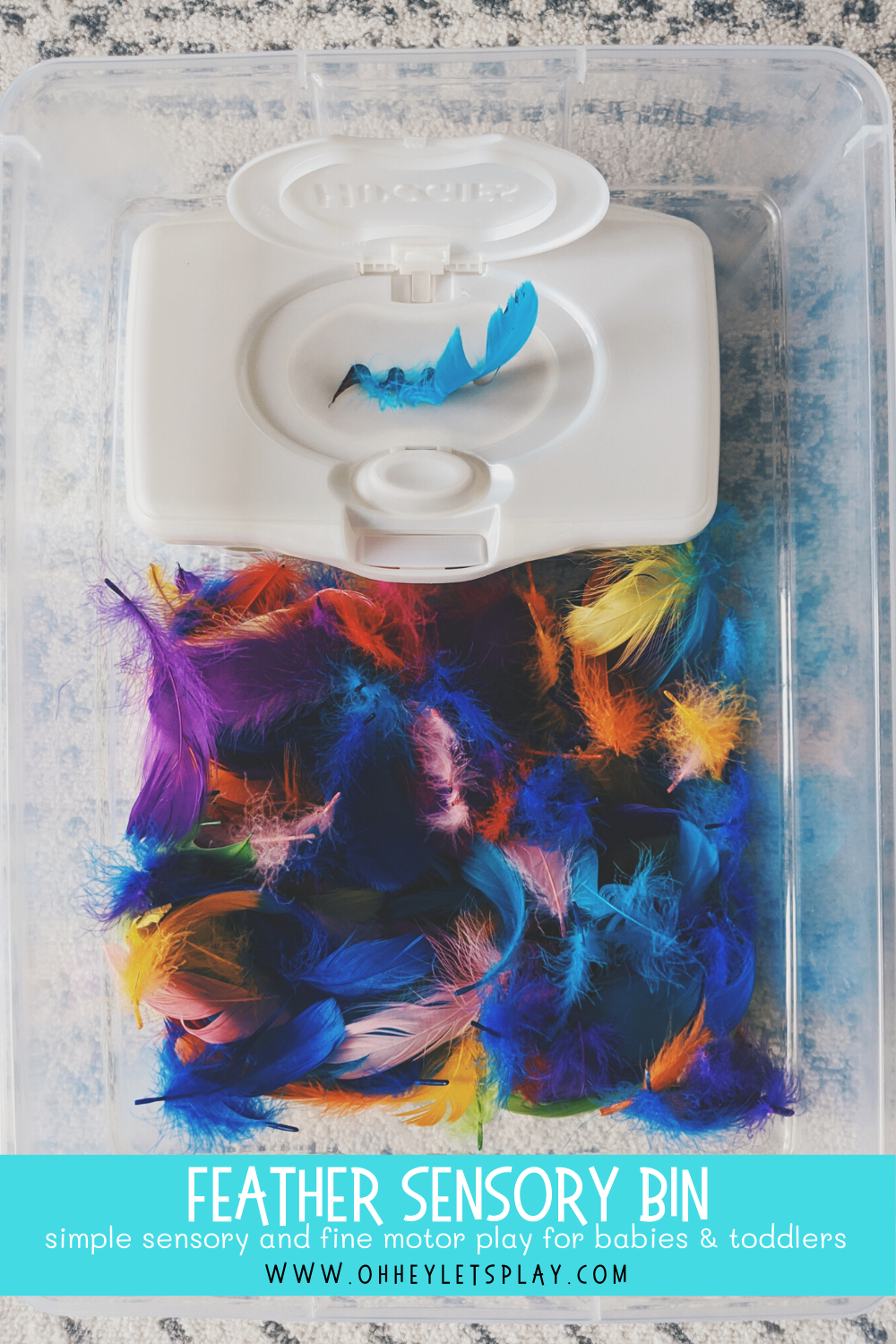Feather Sensory Bin
Disclaimer: This post includes affiliate links which means I would earn a small commission if you were to purchase through those links. All opinions are my own, and I only link to products that I truly recommend.
Materials Used:
- colorful feathers
- clear plastic storage bin
- empty wipes container
Sensory play doesn’t have to be messy!
Some people hear “sensory play” and run for the hills because they associate it with MESS. If that’s you, don’t run away this time. There are so many ways to engage in sensory play that doesn’t have to be messy, and this is one of them. FEATHERS.
RELATED:
Check out these other sensory play activities:
Farm-Themed Sensory Play
Magnetic Shapes in Rainbow Rice
Melting Frozen Pom Poms
What’s so great about sensory play?
The answer is everything. Everything about it is great. First of all, it’s entertaining for little ones. It’s different than the average light-up/blinking/talking toys they see all the time. It’s different and it’s interesting. There’s so much to explore! They are being exposed to new textures, sights, sounds, sometimes maybe smells, and depending on your sensory bin, potentially even taste (obviously not this one- let’s try not to eat the feathers, kids).
You’ll see in the photo below, that Tatum (1.5 years old) even discovered that she could blow the feathers and thought it was hilarious to watch them float around. When little ones are engaged in sensory play, not only are they exploring new materials using their different senses, but they are also developing new vocabulary and other language/social skills. Sensory play can lend itself to imaginary play, problem-solving, fine motor and gross motor development, and can even be helpful in processing emotions. I dare you to bring out a bin of rice and tell me it’s not soothing to play with.
RELATED:
Check out these posts filled with activity ideas for 1-2 year olds:
12-18 Month Activity Ideas
30+ Activities for 1-2 Year Olds
A bin of feathers would have been fun all on its own, honestly, but I decided to add one of these empty wipes containers for an added fine motor component. Tatum could just sit and push the little button to open and close the container all day if I let her (ok maybe not really all day but you get the idea)- so the container on its own is a fun new “toy.” I encouraged her to push the feathers into the container and then showed her how to open it and dump them out. SO. FUN.
What if they try to eat the feathers?
Babies and toddlers will be babies and toddlers. They put things in their mouths. But they also learn and catch on quickly if we are persistent. There are several different ways to do sensory play in a way that is considered “taste-safe” but obviously feathers are not one of those ways. If you are generally concerned about your little one trying to eat feathers then either this isn’t the sensory bin for you, OR be sure to monitor very closely.
I always try to monitor our sensory play if there’s any chance of tasting, even when it is “taste safe.” It’s important to reiterate and help them understand that the contents in a sensory bin are “for playing, not eating,” and to be close by to provide quick distractions when the contents are headed for the mouth. For example- they try to eat a feather and you quick butt-in and suggest trying to blow the feather, or push it into the container instead. The more we distract, and reiterate that it’s not food, the less likely they will be to actually try and eat it. ;) HOPEFULLY.
We had a lot of fun with this sensory bin and can’t wait for you to try it!












